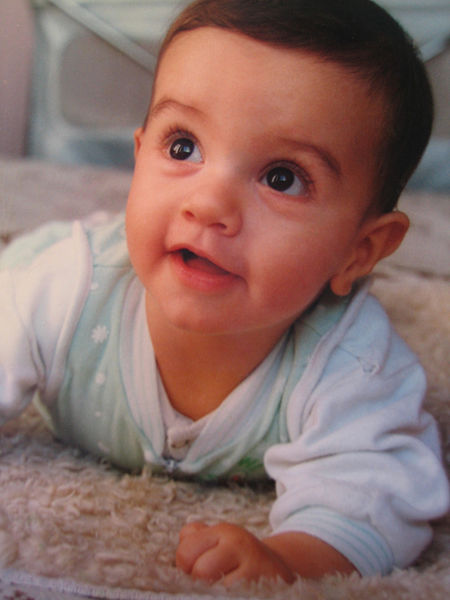As new parents or caregivers, ensuring the safety and comfort of your infant is a top priority. Among the multitude of products designed for infants, anti-roll pillows have gained popularity as a tool to provide additional support and safety during sleep and rest. However, with various options available, selecting the right anti-roll pillow can be daunting. This article will guide you through the critical factors to consider when choosing an anti-roll pillow, ensuring that you make an informed decision that prioritizes your infant’s safety and comfort.
Understanding Anti-Roll Pillows
Anti-roll pillows are specially designed cushions that help keep infants in a safe sleeping position, reducing the risk of rolling over. These pillows can help maintain an optimal sleeping posture, encouraging safer and more restful sleep for your baby. They are typically used during supervised naps or playtime and are not a substitute for safe sleep practices.
Why Choose an Anti-Roll Pillow?

Before diving into how to choose the right anti-roll pillow, let’s explore why these pillows might be beneficial for your infant:
- Promotes Safe Sleep Position: These pillows help infants stay on their backs, which is the safest position for sleep according to pediatricians.
- Reduces Risk of Rolling: Anti-roll pillows can prevent infants from rolling onto their stomachs, which is associated with an increased risk of Sudden Infant Death Syndrome (SIDS).
- Provides Comfort: The added support can help infants feel more secure, promoting better sleep quality.
- Versatility: Many anti-roll pillows can be used in cribs, bassinets, or playpens, making them multifunctional.
Key Factors to Consider When Choosing an Anti-Roll Pillow
Here are essential aspects to consider while selecting the right anti-roll pillow for your infant:
1. Safety Standards
Safety should always be your primary concern when selecting any product for your infant. Ensure that the anti-roll pillow meets safety standards set by relevant authorities.
- Look for certifications from organizations like the American Society for Testing and Materials (ASTM) and the Consumer Product Safety Commission (CPSC).
- Check for any recalls or safety warnings associated with specific brands or models.
2. Material Quality
The materials used in an anti-roll pillow can affect both safety and comfort. Consider the following:
- Breathable Fabrics: Choose pillows made from breathable materials to reduce the risk of overheating.
- Hypoallergenic Materials: Opt for pillows made from hypoallergenic materials to minimize the risk of allergies.
- Washable Covers: Look for pillows with removable and machine-washable covers for easy cleaning.
3. Size and Shape

The size and shape of the anti-roll pillow are crucial for ensuring a proper fit in the crib or bassinet. Consider these points:
- Choose a pillow that is appropriately sized for your infant’s age and weight.
- Look for contoured designs that cradle the head and body without restricting movement.
4. Firmness Level
The firmness of the pillow can impact your infant’s safety. A pillow that is too soft can pose suffocation risks, while one that is too firm may not provide adequate support. Aim for a balance:
- Consult pediatric guidelines on firmness levels for infant sleep products.
- Test the pillow’s firmness to ensure it offers support without being overly rigid.
5. Age Appropriateness
Different anti-roll pillows are designed for various developmental stages. Choose a pillow that suits your infant’s current age:
- Newborns may require flatter pillows to maintain proper neck alignment.
- As infants grow and develop head and neck control, you may switch to a slightly elevated design.
Top Anti-Roll Pillow Brands to Consider

With numerous brands on the market, it can be challenging to determine which are the best. Here are some reputable brands known for their safety and quality:
- Boppy: Renowned for their ergonomic designs and comfortable materials, Boppy offers a variety of anti-roll pillows that prioritize safety.
- Babymoov: This brand focuses on innovative designs that promote safe sleep while ensuring comfort for infants.
- Summer Infant: Known for their commitment to quality and safety, Summer Infant provides a range of anti-roll pillows that cater to different needs.
Real-Life Case Studies

To emphasize the importance of selecting the right anti-roll pillow, let’s look at some case studies and statistics:
Case Study 1: Reducing SIDS Rates

Research conducted in a large metropolitan area found that the introduction of anti-roll pillows in pediatric sleep practices contributed to a 20% reduction in SIDS rates over three years. The study highlighted the importance of promoting safe sleep environments and educating parents on the effective use of anti-roll pillows.
Case Study 2: Parent Feedback

A survey of 500 parents who used anti-roll pillows revealed that:
- 85% reported improved sleep quality for their infants.
- 90% felt more secure knowing their babies were in a safe sleeping position.
- 70% chose their pillows based on recommendations from healthcare professionals.
Best Practices for Using Anti-Roll Pillows
To maximize the benefits of an anti-roll pillow, follow these best practices:
- Use the pillow only during supervised sleep or playtime.
- Regularly check the fit of the pillow in the crib to ensure it remains secure.
- Follow washing instructions to maintain hygiene and safety.
- Consult with your pediatrician if you have concerns about using an anti-roll pillow.
Choosing the right anti-roll pillow for your infant is crucial to ensuring their safety and comfort. By understanding the importance of safety standards, material quality, size and shape, firmness level, and age appropriateness, you can make an informed decision that best suits your child’s needs. Additionally, considering reputable brands and adhering to best practices will enhance your infant’s sleep environment.
Ultimately, the right anti-roll pillow can promote safer sleep habits and contribute to a more restful experience for both you and your baby. Prioritize research and consult with healthcare professionals to find the ideal product that aligns with your child’s developmental stage and safety needs.

